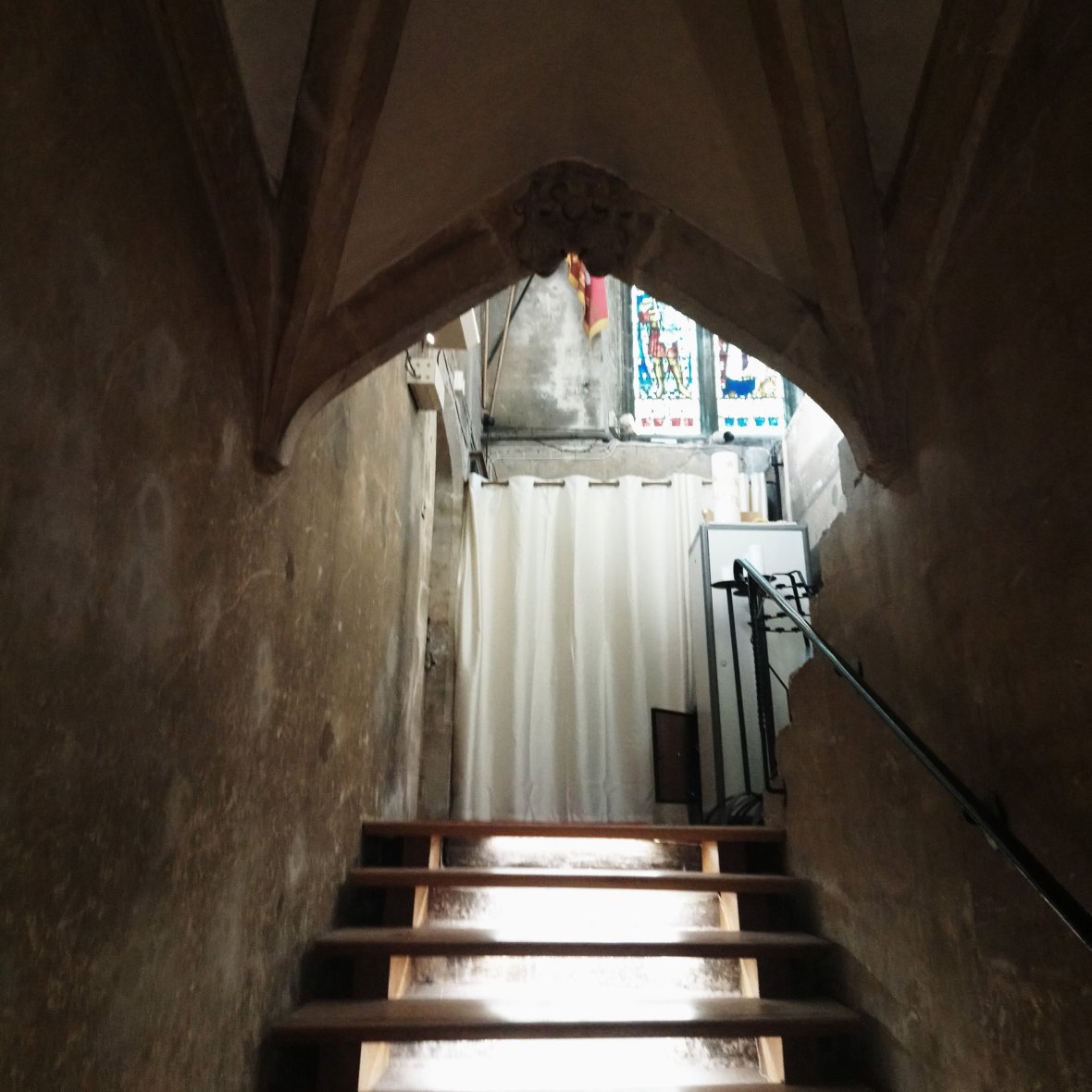
I wandered into the cathedral in Bristol and was accosted by a starry eyed clergyman. I had no idea what to expect from the ecclesiastical epicentre of such a powerful city, filled with affluence and built on a history of canny and sometimes brutal commercialism. Perhaps the church would be a 19th century monstrosity stuffed with obeisance to the wealthy.
The clergyman listened to my request. Please tell me the Cathedral’s construction history briefly, I asked, and which bit came first? Are there ancient parts?
I had stumbled, it seemed, into one of the finest pieces of mediaeval architecture in Europe. Oh, yes, he effused. The oldest parts date back to the 1100s. Try the cafe, or the Chapter House, or the side chapel.
I glanced witheringly at the clearly 19th century Nave ( I am such a temporal snob) and set off in search of the ancient transepts the side aisles.
It was unawares they caught me, blindsided me with centuries of silence and contemplation, palpable even with the bustle of a modern city outside.
It was a set of worn stone stairs, unremarkable but for the fact that the centre of each step dipped, for all the world as if a stream had been flowing over them for centuries.
Yet they were far from water. The stream was a human one: the feet of religious, century after century since 1100, their feet carrying them upwards to worship.
They are called The Night Stairs. Every night they used these stairs to travel to chapel for night services.
Before this was a cathedral it was an abbey, and the monastic routine included prayer, day and night, hour past hour. The night chapel was upstairs, and no one has ever removed the stairs those men took as they ascended to prayer.
I am not painting them as saints, not even as holy men, though undoubtably some of them were; rather, they represent a steady constancy, a gradual unfolding unusual in the behaviour of man, and wonderful to behold on a set of old stone stairs.
Looking down on them are stone faces – did I spot a green man? Certainly there is an angel. For health and safety, and to protect this astonishing Mediaeval ley-path, the stairs are overlaid with wooden ones, suspended above.
In 1987, artist Yuko Shirashi painted a picture. It was called Three Greys. It was one of those paintings which a certain kind walks into the gallery and says, they got paid £100,000 for painting that?
I cannot find a reproduction of it anywhere online; the gallery which exhibited it has closed and the artist only lists works dating back to 2002. I have it in a book; maybe one day I will see it for myself.
Like a rock, the more you gaze the more this exquisite detail this set of three blocks of grey reveals. One is almost like the grain of old wood; one solid and impenetrable;one as impalpable as mist.
I found it through the art meditations of Sr Wendy Becket, a visionary interpreter of art, who comments: “its beauty, like so much else we see, reveals itself only in time. Silence is making friends with time. It does not fight or waste it, it refuses to run after it. Silence floats free with time, letting the pattern of the moments unfold at its own pace.”
There: that. My minds eye perceived the endless cyclical pattern of feet upon the night stairs, treading in silence to worship ; and the waiting for a picture, seemingly empty, to unfold, in humility.
That is one of the great unsung joys of man’s lot. The passing of time, without speaking, in contemplation, the waiting for our universe to unfold in front of our small, wondering human eyes.
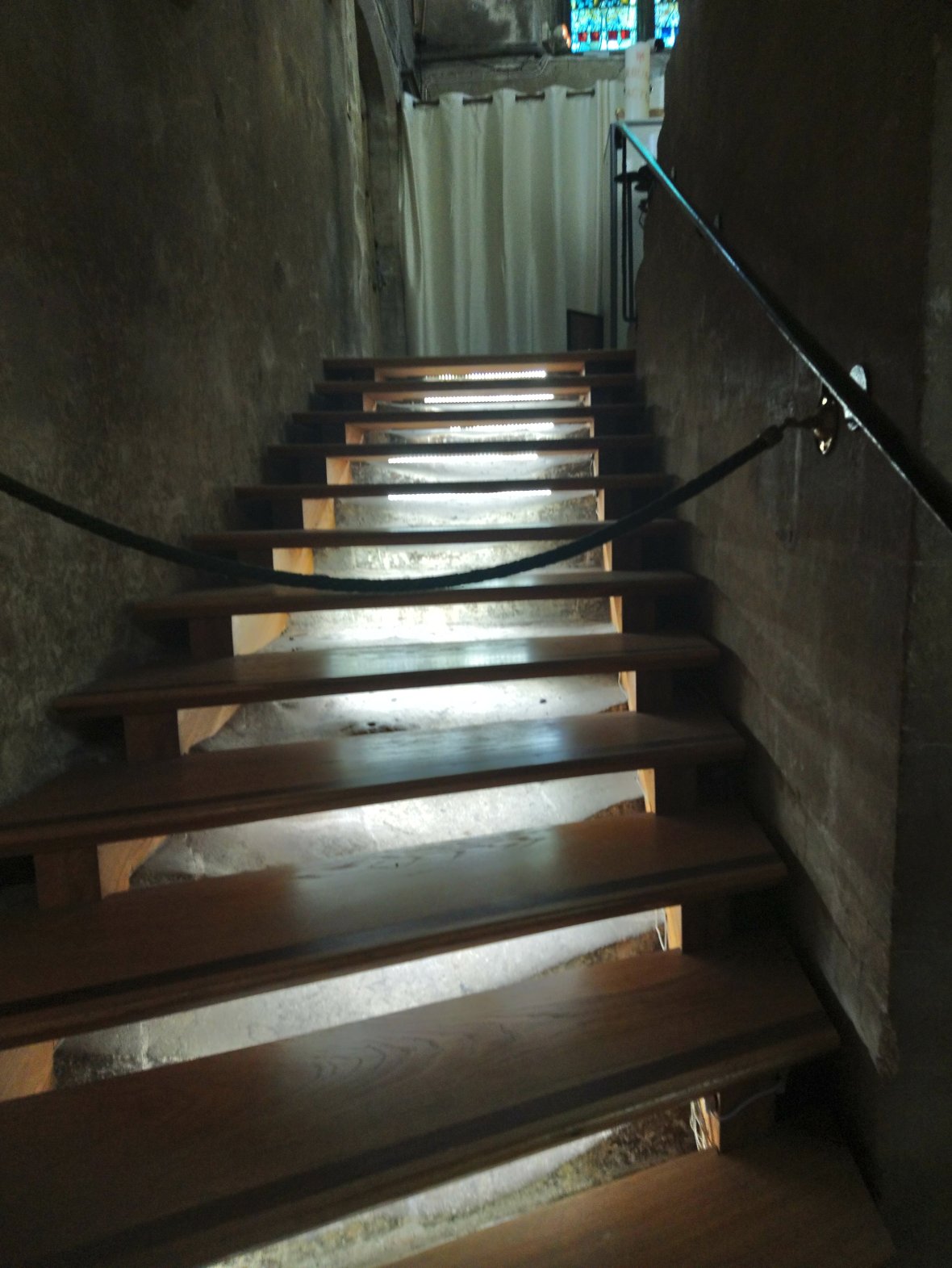


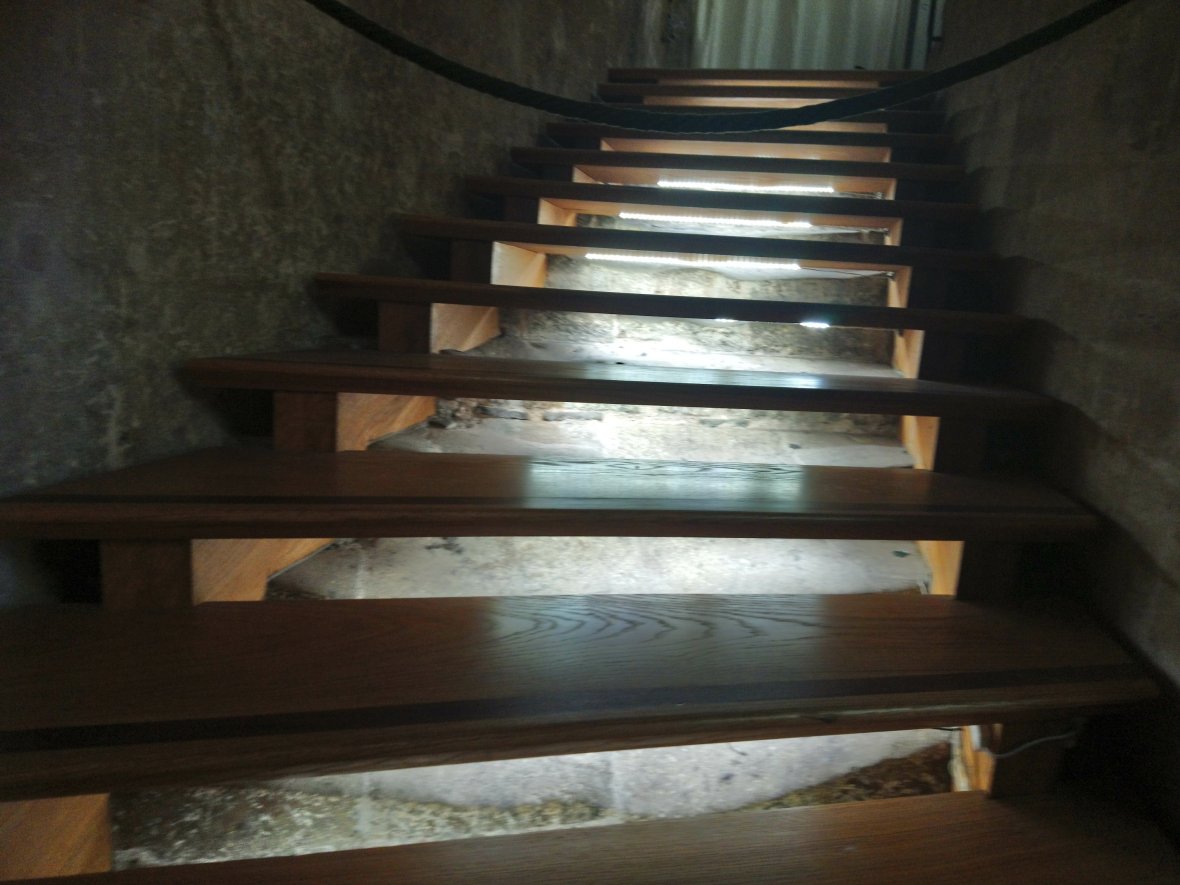
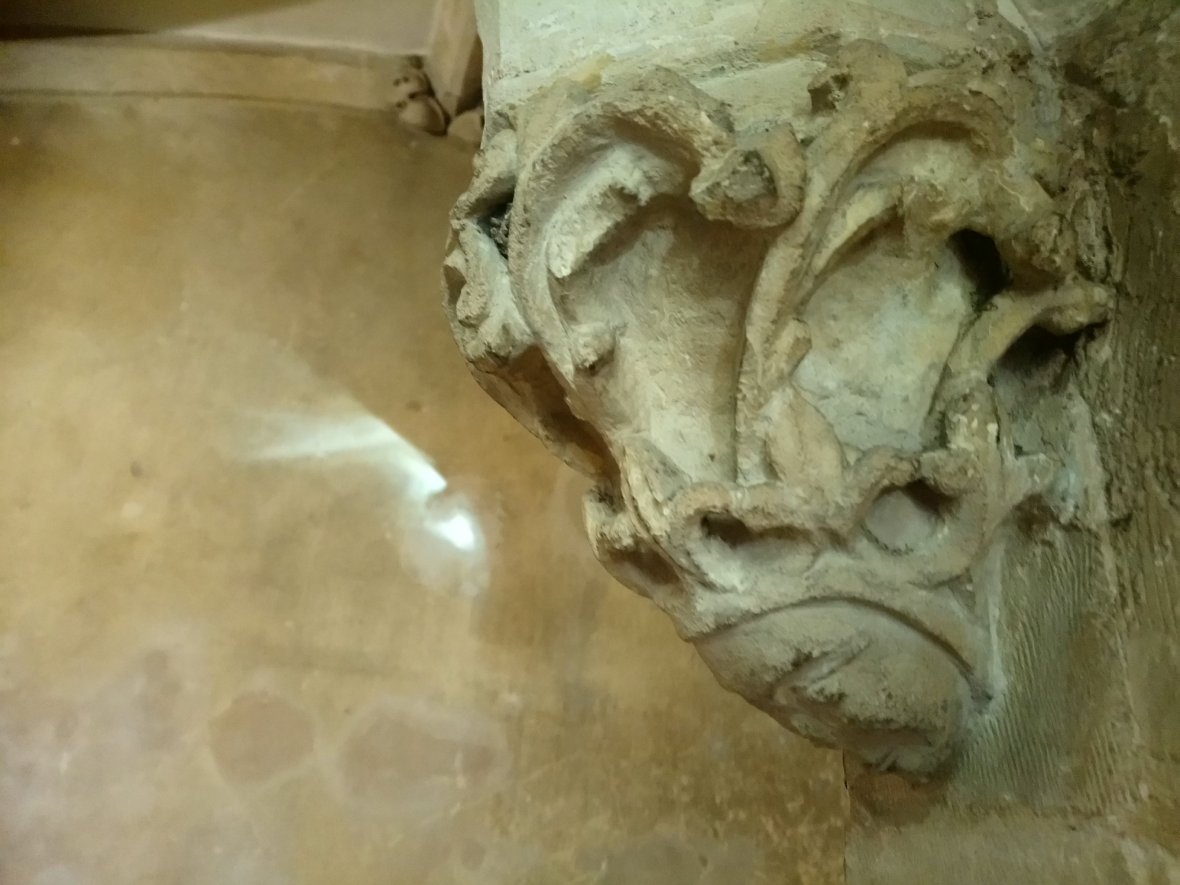
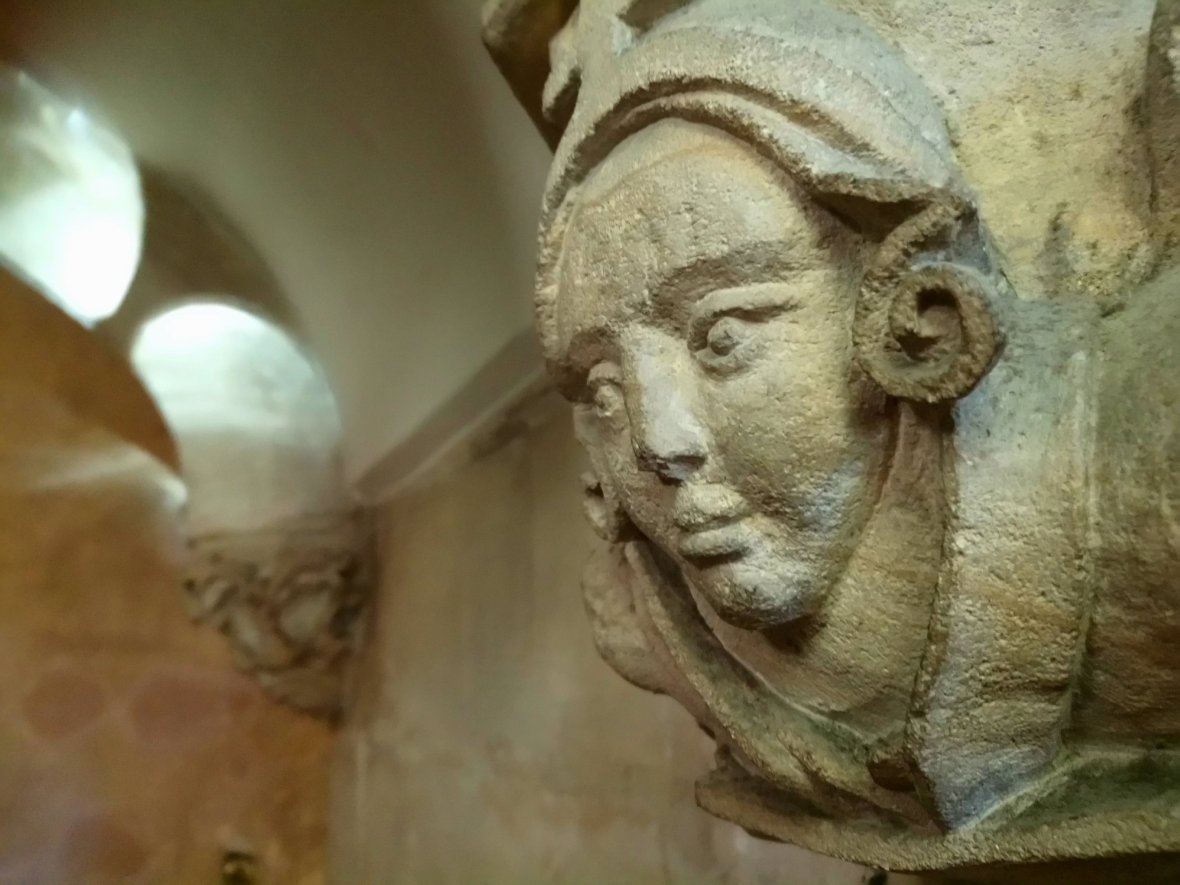
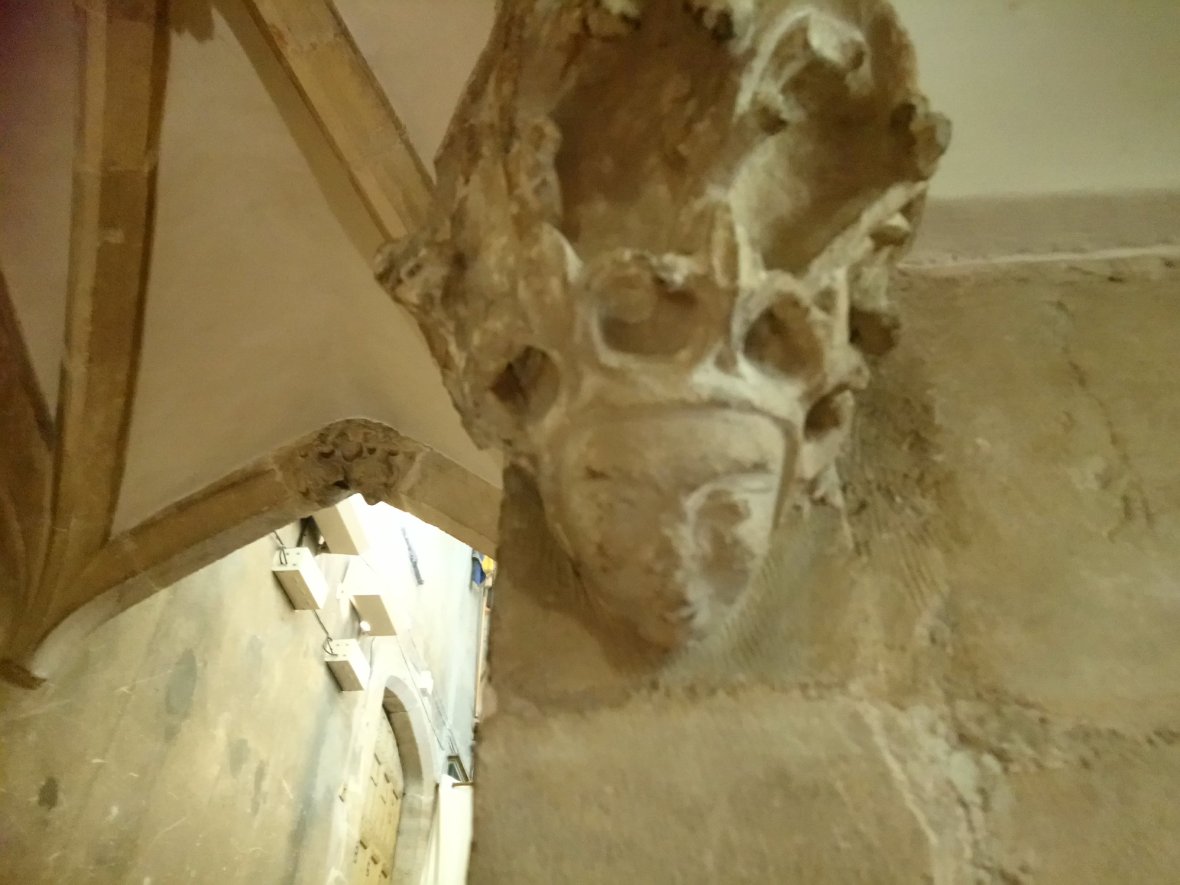
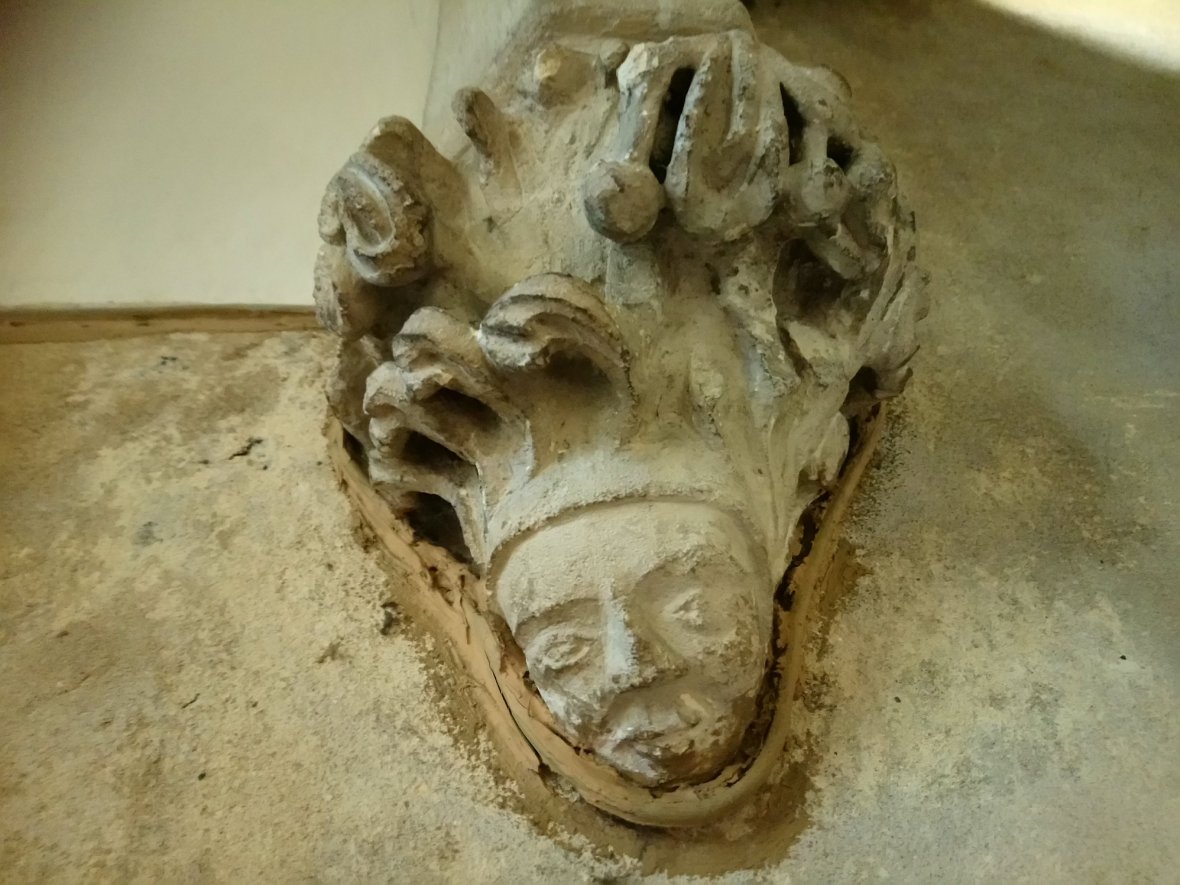
Temporal snobbery aside, this was a great piece. The 3 greys obviously need to be seen “in the flesh”. Texture isn’t easily copied
Very True, Sidney. Yet even staring at a photograph in a book the piece has some power. I’d love to track it down and see it….
If only they could speak
The stories they would tell, Brian….
…would be hard to imagine.
these are so cool
I was so pleased to find them 🙂
Your posts like this infuriate me. Why can’t I, too, wander off on a whim and wallow in such antiquity? I am definitely geographically challenged.
You certainly took steps in the right direction, here!
I can understand why, but even though the solution seems elegant I’m disappointed that the decision was made to install wooden treads above the worn steps since I last saw these. They obscure the shock of seeing the result of that stream of feet, they mute our vivid sense of the passage of time; I could even have borne perspex or reinforced glass steps.
Hope you explored the Romanesque chapter house with its impressive blind arcading, the Late Saxon grave slab with the harrowing of Hell depicted, not to forget the skeleton vaulting in the side chapel or the inklings of the wonderful scissors arches in Wells Cathedral that we can spot in the arch spandrels of the chancel’s side aisles.
I’m captivated at the thought of those Night Stairs, Kate. The dutiful and obedient feet that left their mark reserve a special place in my heart for what they believed and followed. I believe I would have felt their presence and been very moved. I love your reference to Sr Wendy Becket. When she was first introduced to American audiences through our Public Broadcasting, I wasn’t interested. I’ve recently “found her” again and almost can’t get enough. Now she truly inspires. As do you, dear Kate. Not everyone has eyes that see, but you do.
Dear Katae, Debra says so well what my bemused mind was unable to articulate. I want to thank her for commenting and you for your natural interest in all that touches our humanity. Peace.
Took a peek at your blog after several years. Glad to see it’s still here! I do hope you write again soon 🙂 You have such a unique perspective and engaging way of capturing it in words.
Thank you Zoe 🙂 Hope you are keeping well in These Strange Times xx
Took a peek at your site after several years. Glad to see it’s still here! I do hope you write again soon 🙂 You have such a unique perspective and an engaging way of capturing it with words .
Your abrupt vanishment for nearly a year now is a source of some annoyance!
Some of those passages stopped the flow of time, albeit momentarily, for none can stop the river of time that flows forever ahead, not even the footsteps rustling up and down centuries old staircases leaving behind the imprint of their existence.